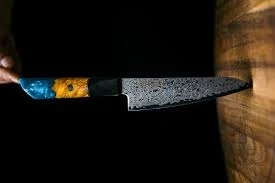Japanese knives have the best knife balance and that is why they are very popular. When you take a look at your chef's knife, it is easy to know the material used to make the knife, how sharp the blade is and how long the blade is. With little practice, you will also be able to tell whether the handle is comfortable for you or not.
But there is a hidden element to every knife – its balance. Most people don’t know whether their knife is balanced or not. However, if you are an aspiring chef, you should know whether your knife is balanced. That is what this article is here for. We will cover what knife balance means and how to tell whether a knife is balanced or not.
Why is knife balance important?
Knife balance relates to dexterity and comfort. When you use a well-balanced knife, you will be able to use your knife for over an hour without hand or wrist discomfort. You will also find it easier to handle your knife and this will make it simple for you to make precise cuts.
On the other hand, when you use a poorly balanced kitchen knife, you will find the opposite. You will develop pressure points on your wrists or hands that will be very painful with prolonged use. You will also find it awkward to make precise or delicate cuts.
Finding the balance point of your knife
There is no standard for knife balance and that is what you should keep in mind when buying Japanese cooking knives. Depending on the type of kitchen knife you are using, its balance point will be unique. For example, a chef knife – most chef knives balance around the butt. This is because both Eastern and Western cutting styles use a pinch grip. It makes sense that you would buy a knife that is balanced where you are holding it.
You can test whether a chef’s knife is typically balanced by extending the index finger and keeping the knife balanced. If the knife is balanced then you should be able to find the balance point past the bolster at the butt.
On the other hand, if the knife tips towards the handle then the knife is handle-heavy. Some professional chefs prefer this type of kitchen knife balance when working with delicate and soft ingredients. Chopping scallions or shallots is a great example as these do not require a lot of force to cut.
If the knife tips towards the blade then the knife is blade heavy. Chefs who work with large pieces of meat may prefer this type of knife because it has a heavier blade that provides leverage for tough cuts.
The Effects of Grip and Techniques on knife balance
The grip and technique of Japanese knives are less important for knife balance than the type of kitchen knife you are using. This assumes that you have learned the basics of how to hold your knife safely, using your thumb and forefinger to grip past the bolster.


